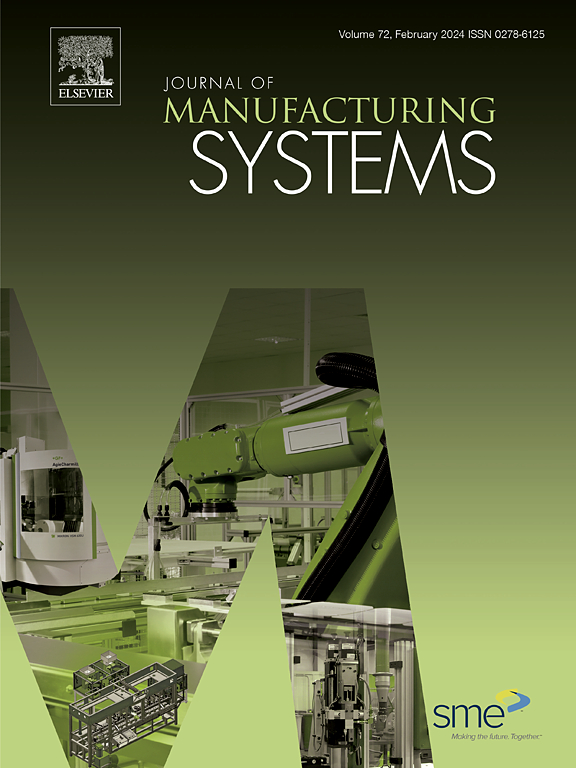Challenges of randomness in tool wear with small samples: A physics-informed cross-domain monitoring method
IF 14.2
1区 工程技术
Q1 ENGINEERING, INDUSTRIAL
引用次数: 0
Abstract
Cutting tool wear monitoring is crucial for enabling predictive maintenance in machining processes. However, uncertainties in tool degradation during small-batch personalized machining present significant challenges to achieving accurate monitoring. This study addresses the randomness of tool wear through a dual-level approach: data and model. At the data level, an empirical tool wear model is developed based on nonlinear wear mechanisms, which is integrated with a domain-discriminative generative adversarial network to construct a target domain tool wear data generation framework. At the model level, a feature extractor tailored for transfer learning is designed using nonlinear relationships inherent in tool wear mechanisms, complemented by fine-tuning the classifier with the generated target domain tool life cycle data to handle domain shifts caused by randomness. The proposed method is validated using both public datasets and workshop experiments under both fixed and variable cutting conditions. Compared with baseline models, ablation models, and several state-of-the-art data generation and transfer learning models, the proposed approach demonstrates superior adaptability and robustness in handling the randomness in tool wear, even with highly imbalanced and small datasets. The results confirm the effectiveness of the proposed method in tool wear monitoring for small-batch personalized machining processes.
小样本工具磨损随机性的挑战:一种物理信息跨域监测方法
切削刀具磨损监测对于实现加工过程的预测性维护至关重要。然而,小批量个性化加工过程中刀具退化的不确定性给实现精确监测带来了巨大挑战。本研究通过数据和模型两个层面的方法来解决刀具磨损的随机性问题。在数据层面,基于非线性磨损机制开发了经验刀具磨损模型,并将其与领域判别生成式对抗网络相结合,构建了目标领域刀具磨损数据生成框架。在模型层面,利用工具磨损机制中固有的非线性关系设计了一个为迁移学习量身定制的特征提取器,并利用生成的目标域工具生命周期数据对分类器进行微调,以处理随机性导致的域偏移。在固定和可变切削条件下,使用公共数据集和车间实验对所提出的方法进行了验证。与基线模型、烧蚀模型以及几种最先进的数据生成和迁移学习模型相比,所提出的方法在处理刀具磨损的随机性方面表现出卓越的适应性和鲁棒性,即使在高度不平衡和小数据集的情况下也是如此。结果证实了所提出的方法在小批量个性化加工过程中监测刀具磨损的有效性。
本文章由计算机程序翻译,如有差异,请以英文原文为准。
求助全文
约1分钟内获得全文
求助全文
来源期刊

Journal of Manufacturing Systems
工程技术-工程:工业
CiteScore
23.30
自引率
13.20%
发文量
216
审稿时长
25 days
期刊介绍:
The Journal of Manufacturing Systems is dedicated to showcasing cutting-edge fundamental and applied research in manufacturing at the systems level. Encompassing products, equipment, people, information, control, and support functions, manufacturing systems play a pivotal role in the economical and competitive development, production, delivery, and total lifecycle of products, meeting market and societal needs.
With a commitment to publishing archival scholarly literature, the journal strives to advance the state of the art in manufacturing systems and foster innovation in crafting efficient, robust, and sustainable manufacturing systems. The focus extends from equipment-level considerations to the broader scope of the extended enterprise. The Journal welcomes research addressing challenges across various scales, including nano, micro, and macro-scale manufacturing, and spanning diverse sectors such as aerospace, automotive, energy, and medical device manufacturing.
 求助内容:
求助内容: 应助结果提醒方式:
应助结果提醒方式:


